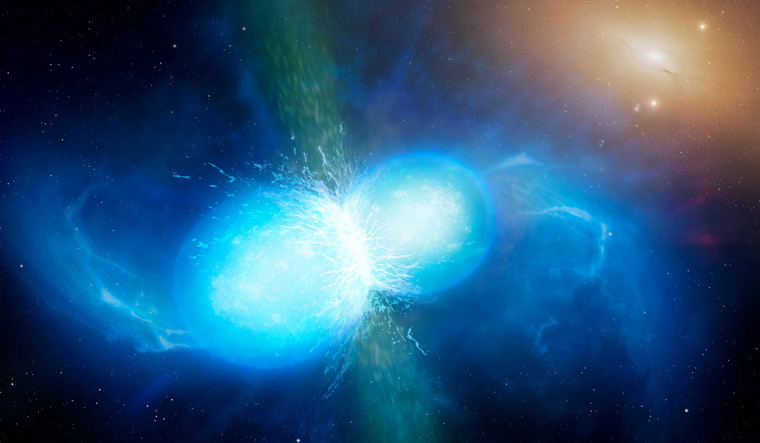In a startling discovery, scientists at the University of Illinois Urbana-Champaign have unveiled the terrifying potential of kilonovas, cataclysmic events caused by the collision of ultra-dense neutron stars. "We found that if a neutron star merger were to occur within around 36 light-years of Earth, the resulting radiation could cause an extinction-level event," Haille Perkins, team leader and a scientist at the University of Illinois Urbana-Champaign, told Space.com.
What is a kilonova explosion?
A kilonova explosion is a rare and powerful cosmic event that has the potential to eradicate life on Earth for thousands of years. It occurs when two neutron stars or a neutron star and a black hole collide and merge, producing a blast of gamma rays that lasts only a matter of seconds. While not as violent as a supernova, a kilonova can still have devastating consequences for our planet if it were to occur within a relatively close proximity, around 36 light-years from Earth. The resulting radiation from such an event could cause an extinction-level event, emitting lethal particles that would decimate Earth's ozone layer and expose us to deadly ultraviolet radiation for a staggering 1,000 years .
How could it threaten all life on Earth?
A kilonova explosion could end life on Earth through the emission of lethal particles and radiation. The collision of neutron stars would generate an expanding bubble of cosmic rays, which would engulf everything in its path and shower Earth with highly energetic charged particles. Cosmic rays are considered the most formidable threat among the analyzed particles. Additionally, gamma rays would emanate in two concentrated beams, capable of obliterating any celestial body within a range of 297 light-years. Even a tangential encounter with gamma radiation could severely degrade our ozone layer, requiring approximately four years for recovery. Furthermore, gamma rays colliding with interstellar dust produce X-ray emissions that possess the same ionizing effect on Earth's ozone layer. This prolonged impact makes X-rays potentially even more lethal, although Earth would need to be within a relatively close proximity of about 16 light-years to experience their full force .
No need to panic as kilonovas are rare
It is important to note that the risk of a kilonova explosion happening within the necessary distance to threaten life on Earth is very low. The nearest known neutron stars are more than 400 light-years away from our planet. Scientists also emphasize that other events, such as solar flares, asteroid impacts, and supernova explosions, pose more plausible threats to our planet.
While a kilonova explosion has the potential to cause catastrophic consequences for life on Earth, it is a rare event and the chances of it occurring within a dangerous proximity to our planet are very low. The scientific community continues to explore and understand the cosmos, enabling us to mitigate potential risks and safeguard our planet's future.


